ARTICLE AD BOX

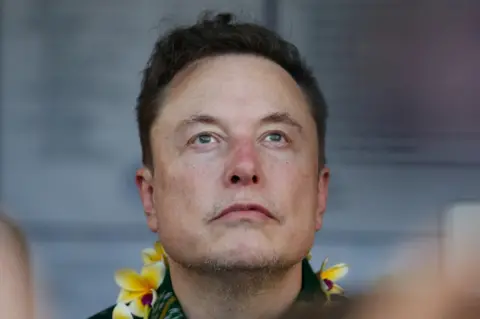 Reuters
Reuters
Elon Musk’s Starlink has 6,419 satellites in orbit and four million subscribers across 100 countries
The race between two of the world’s richest men, Elon Musk and Mukesh Ambani, is intensifying as they prepare to face off in India’s satellite broadband market.
After India's government announced last week that satellite spectrum for broadband would be allocated administratively rather than through auction, this battle has only heated up.
Mr Musk had previously criticised the auction model supported by Mr Ambani.
Satellite broadband provides internet access anywhere within the satellite’s coverage.
This makes it a reliable option for remote or rural areas where traditional services like DSL - a connection that uses telephone lines to transmit data - or cable are unavailable. It also helps to bridge the hard-to-reach digital divide.
India's telecom regulator has yet to announce spectrum pricing, and commercial satellite internet services are still to begin.
However, satellite internet subscribers in India are projected to reach two million by 2025, according to credit rating agency ICRA.
The market is competitive, with around half a dozen key players, led by Mr Ambani's Reliance Jio.
Having invested billions in airwave auctions to dominate the telecom sector, Jio has now partnered with Luxembourg-based SES Astra, a leading satellite operator.
Unlike Mr Musk's Starlink, which uses low-Earth orbit (LEO) satellites positioned between 160 and 1,000 km from Earth's surface for faster service, SES operates medium-Earth orbit (MEO) satellites at a much higher altitude, offering a more cost-effective system.
Receivers on the ground receive satellite signals and process it to internet data.
Mr Musk’s Starlink has 6,419 satellites in orbit and four million subscribers across 100 countries. He has been aiming to launch services in India since 2021, but regulatory hurdles have caused delays.
If his company enters India this time, it will boost Prime Minister Narendra Modi's efforts to attract foreign investment, many say.
It will also help his government's efforts to burnish its image as pro-business, countering claims that its policies favour top Indian businessmen like Mr Ambani.

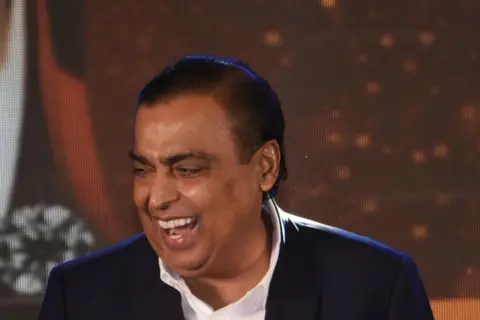 Getty Images
Getty Images
Mr Ambani has spent billions in airwave auctions to dominate India’s telecom sector
While auctions have proved lucrative for it in the past, India’s government defends its decision to allocate satellite spectrum administratively this time, claiming it aligns with international norms.
Satellite spectrum is not typically allocated by auction as the costs involved could impact the financial rationale or investment in the business, says Gareth Owen, a technology analyst at Counterpoint Research. In contrast, administrative allocation would ensure spectrum is fairly distributed among "qualified" players, giving Starlink a chance to enter the race.
But Mr Ambani’s Reliance says an auction is necessary to ensure fair competition, given the lack of clear legal provisions in India on how satellite broadband services can be offered directly to people.
In letters written to the telecoms regulator earlier in October, seen by the BBC, Reliance repeatedly urged the creation of a "level playing field between satellite-based and terrestrial access services".
The firm also said that "recent advancements in satellite technologies... have significantly blurred the lines between satellite and terrestrial networks", and that "satellite-based services are no longer confined to areas unserved by terrestrial networks". One letter stated that spectrum assignment is done through auctions under India's telecom laws, with administrative allocation allowed only in cases of "public interest, government functions, or technical or economic reasons preventing auctions."
On X, Mr Musk pointed out that the spectrum “was long designated by the ITU as shared spectrum for satellites”. The International Telecommunication Union (ITU), a UN agency for digital technology, sets global regulations, and India is a member and signatory.
When Reuters news agency reported that Mukesh Ambani was lobbying the government to reconsider its position, Mr Musk responded to a post on X, saying: “I will call [Mr Ambani] and ask if it would not be too much trouble to allow Starlink to compete to provide internet services to the people of India.”
Mr Ambani's resistance to the administrative pricing method might stem from a strategic advantage, suggests Mr Owen. The tycoon could be “prepared to outbid Musk”, using an auction to potentially exclude Starlink from the Indian market, he says.

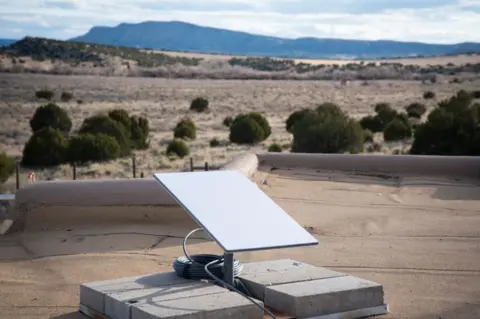 Getty Images
Getty Images
A Starlink satellite on the roof of a home in New Mexico, US
But it is not Mr Ambani alone who supported the auction route.
Sunil Mittal, chairman of Bharti Airtel, has said that companies aiming to serve urban, high-end customers should “take telecom licences and buy spectrum like everyone else”.
Mr Mittal - India's second-largest wireless operator - along with Mr Ambani, controls 80% of the country's telecom market.
Such resistance is a “defensive move aimed at raising costs for international players seen as long-term threats," says Mahesh Uppal, a telecommunications expert.
“While not immediate competition, satellite technologies are advancing quickly. Telecom companies [in India] with large terrestrial businesses fear that satellites could soon become more competitive, challenging their dominance.”
At stake, clearly, is the promise of the vast Indian market. Nearly 40% of India’s 1.4 billion people still don’t have internet access, with rural areas making up most of the cases, according to EY-Parthenon, a consulting company.
For context, China is home to almost 1.09 billion internet users, which is almost 340 million more than India’s 751 million, according to DataReportal, which tracks global online trends.
India’s internet adoption rate still lags behind the global average of 66.2% but recent studies show that the country is closing the gap.
If priced properly, satellite broadband can help bridge some of this gap, and even help in the internet-of things (IoT), a network that connects everyday objects to the internet, allowing them to talk to each other.
Pricing will be crucial in India, where mobile data is among the cheapest globally - just 12 cents per gigabyte, according to Modi.
"A price war [with Indian operators] is inevitable. Musk has deep pockets. There's no reason why he cannot offer a year of free services in [some] places to gain a foothold in the domestic market," says Prasanto K Roy, a technology analyst.
Starlink has already cut prices in Kenya and South Africa.

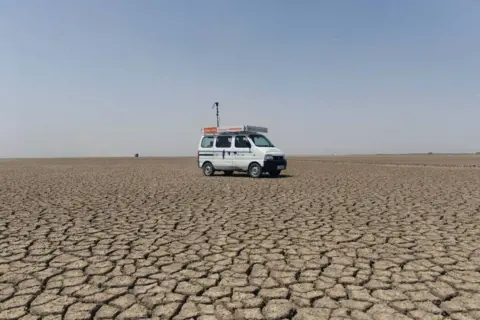 AFP
AFP
Many remote regions of India are still not connected to the internet
It may not be easy though. In a 2023 report, EY-Parthenon noted that Starlink's higher costs - almost 10 times those of major Indian broadband providers - could make it difficult to compete without government subsidies.
Many more LEO satellites - the kind Starlink operates - are needed to provide global coverage than MEO satellites, increasing launch and maintenance costs.
And some of the fears of Indian operators could be unfounded.
"Businesses will never switch completely to satellite unless there is no terrestrial option. Terrestrial networks will always be less expensive than satellite, except in thinly populated regions," says Mr Owen.
Mr Musk could have a first-mover advantage, but "satellite markets are notoriously slow to develop".
The battle between two of the world's richest men over internet of space has truly begun.

 2 months ago
15
2 months ago
15

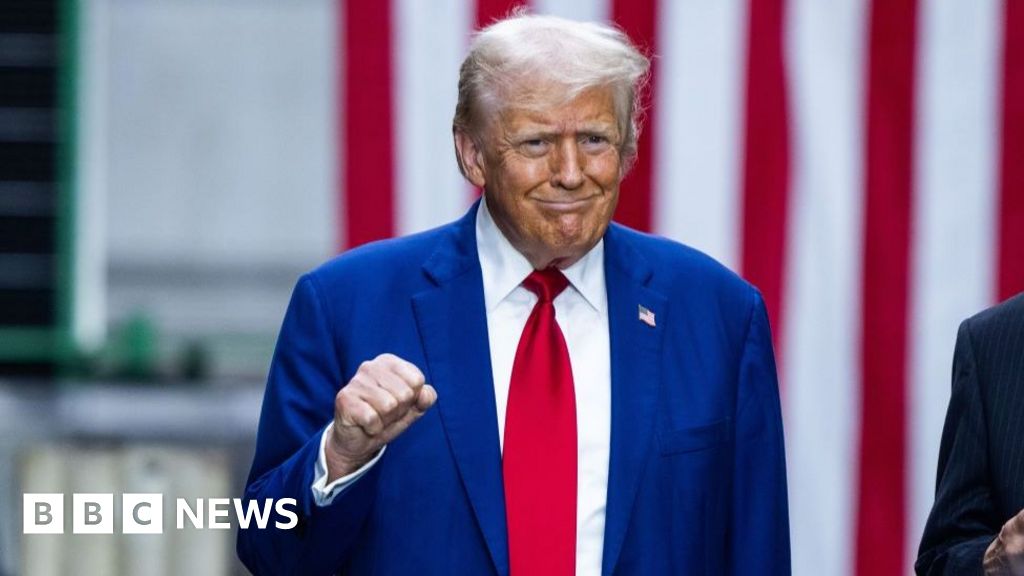
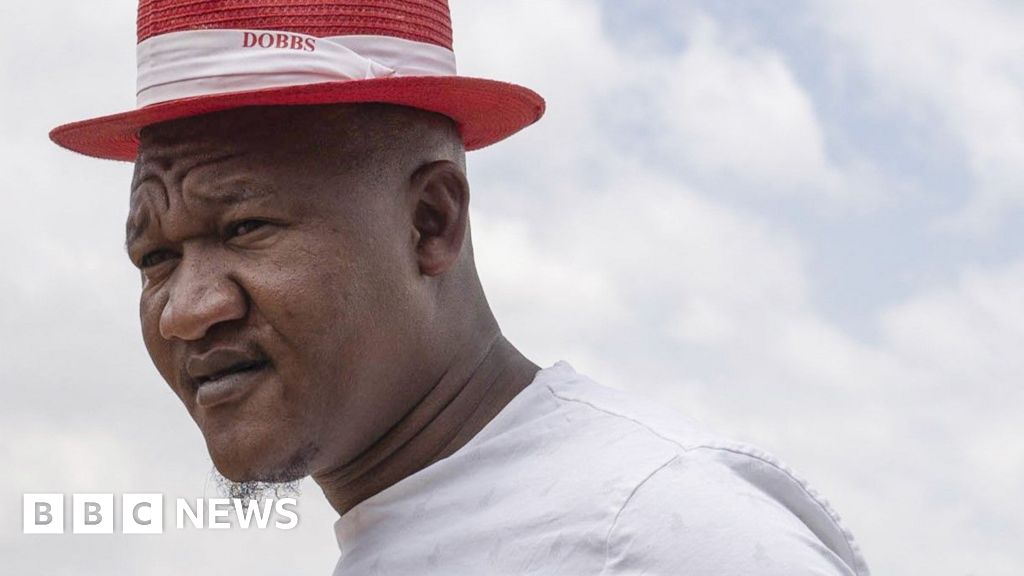





 English (US) ·
English (US) ·